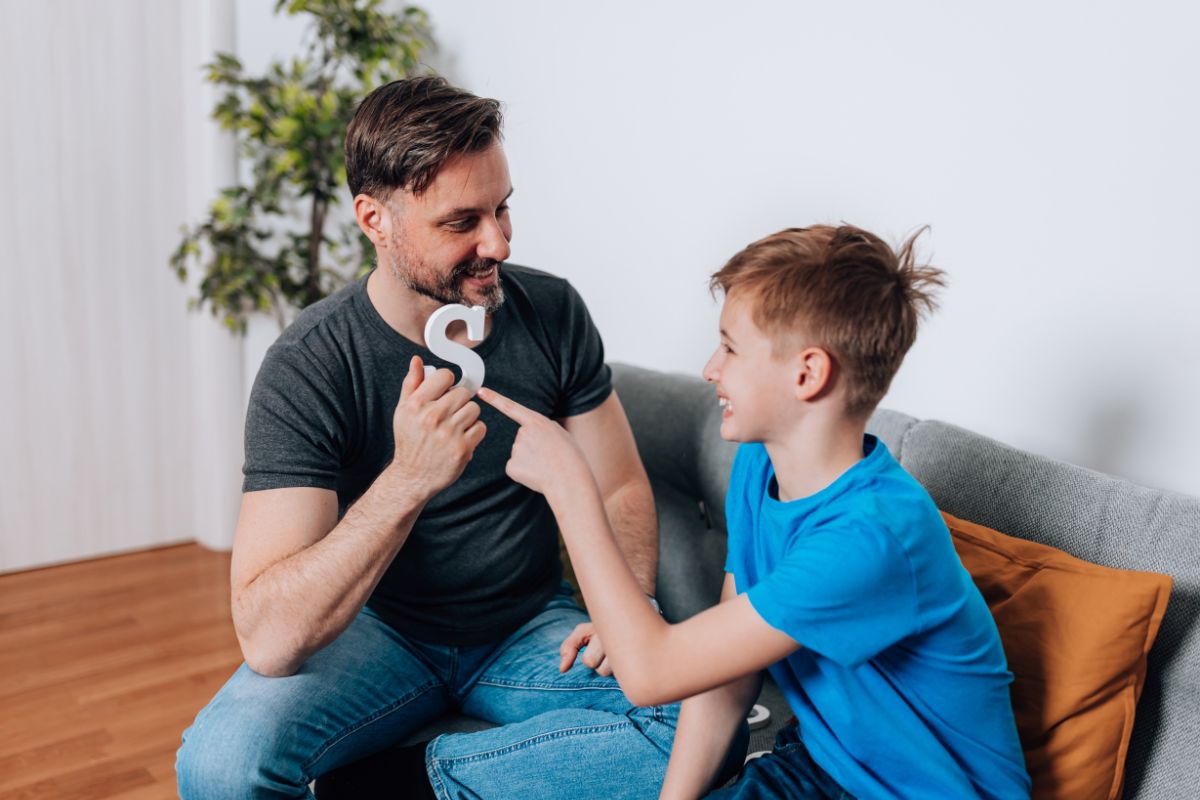Understanding Aphasia vs Dysphasia Key Differences and Similarities

Aphasia (sometimes called dysphasia) is an acquired language disorder that impairs a person’s ability to communicate. It can affect all language modalities – speaking, understanding spoken language, reading, and writing – and typically results from brain damage to the language centers in the dominant (usually left) hemisphere.
Notably, aphasia does not affect intelligence or nonverbal cognition. In practice, “aphasia” and “dysphasia” have largely been used interchangeably to denote the same condition. For example, the UK’s National Health Service defines aphasia (also called dysphasia) as “a condition that makes it difficult to communicate,” most often caused by stroke or brain injury.
In the United States, roughly one-third of stroke survivors develop aphasia – an estimated 225,000 new cases per year and over 2,000,000 Americans living with aphasia. The remainder of this article will detail the causes, types, symptoms, diagnosis, treatment, and regional terminology of aphasia dysphasia.
Terminology and Regional Usage
In early neurological literature, some authors distinguished dysphasia (partial loss of language) from aphasia (complete loss). However, this distinction is rarely applied consistently. Most modern clinicians and researchers treat the terms as synonymous.
Indeed, a consensus statement argues for eliminating “dysphasia” altogether to avoid confusion. Speech-language pathologists and stroke guidelines overwhelmingly prefer “aphasia,” and consumer organizations (like the American and International Aphasia Associations) use that term.
Regionally, usage varies slightly. In the United Kingdom, both terms still appear in practice. The NHS glossary explicitly lists “aphasia (also called dysphasia)” and describes their meanings together.
UK stroke services sometimes use “dysphasia” (especially in historical or clinical settings) to imply milder impairment, but even there “aphasia” is increasingly used as the standard term. In contrast, in the United States the term “aphasia” is virtually universal, and “dysphasia” is rarely used clinically.
Major classification systems and international stroke organizations list separate codes for aphasia versus dysphasia (reflecting the historical distinction), but in everyday practice this distinction is seldom emphasized. In summary, all modern sources advocate using “aphasia” for acquired language disorders, with “dysphasia” at most an alternate or historical label.
Causes of Aphasia/Dysphasia
Aphasia arises from any brain injury that damages language-processing regions. The most common cause by far is stroke, especially in middle cerebral artery infarcts affecting the left hemisphere. Indeed, stroke leads to aphasia in about one-third of survivors.
Any ischemic or hemorrhagic stroke that injures Broca’s, Wernicke’s, or connecting pathways can produce aphasia. Traumatic brain injury (e.g. from accidents) can also cause language deficits if it damages frontal or temporal areas. Other focal insults include brain tumors, abscesses, or infections (encephalitis) affecting the left cortex.
Aphasia can also result from neurodegenerative diseases. In Primary Progressive Aphasia (PPA), for example, language areas slowly atrophy over time (often due to frontotemporal lobar degeneration or Alzheimer pathology).
PPA syndromes (logopenic, semantic, agrammatic variants) lead to a gradually worsening aphasia without an acute injury. Less commonly, transient conditions like severe migraines, seizures, or TIA (transient ischemic attacks) can produce temporary dysphasic episodes.
In summary, the underlying etiology of aphasia/dysphasia includes any disease damaging the dominant hemisphere’s language network – most notably cerebrovascular disease (stroke), but also head trauma, tumors, infections, and neurodegeneration
Read Also: Frog Pose
Types of Aphasia
Distinct regions of the left hemisphere give rise to characteristic aphasia syndromes. For example, a lesion in Broca’s area (left inferior frontal gyrus) causes an expressive (nonfluent) aphasia, whereas a lesion in Wernicke’s area (posterior superior temporal gyrus) causes a receptive (fluent) aphasia. Other patterns occur when various combinations of these and surrounding areas are damaged. Classic aphasia types (sometimes still labeled “dysphasia”) include:

- Broca’s (Expressive) Aphasia: Caused by damage to the inferior frontal lobe, this produces halting, effortful speech with short phrases (telegraphic speech), good comprehension, and awareness of deficits. Patients typically have difficulty forming words and grammar but understand others relatively well.
- Wernicke’s (Receptive) Aphasia: From damage in the posterior temporal lobe, yielding fluent but often meaningless speech, neologisms (“word salad”), and poor auditory comprehension. Those affected may speak in long sentences that lack real content and be unaware of their errors.
- Conduction Aphasia: A lesion in the arcuate fasciculus (connecting Broca’s and Wernicke’s areas) leads to good comprehension and fluent speech but a striking inability to repeat words or phrases. Speech may include phonemic paraphasias (sound substitutions), and patients usually recognize their mistakes.
- Global Aphasia: Extensive damage (e.g. massive left MCA stroke) causes global deficits in expression and comprehension. Such patients are severely impaired in speaking and understanding, often able only to produce a few words or stereotyped utterances.
- Transcortical Motor Aphasia: Similar to Broca’s aphasia but with intact repetition, typically due to frontal lesions sparing the cortex itself. Patients have nonfluent speech but can echo phrases.
- Transcortical Sensory Aphasia: Similar to Wernicke’s but with preserved repetition, usually from temporoparietal lesions isolating Wernicke’s area. Speech is fluent and paraphasic, with poor comprehension, but repetition is intact.
- Anomic Aphasia: A milder form where word-finding difficulty (especially naming objects) is the main issue. Speech is fluent, and comprehension largely preserved, but patients struggle to retrieve nouns and proper names.
- Primary Progressive Aphasia (PPA): A degenerative form of aphasia without stroke or injury. It has subtypes (semantic, logopenic, agrammatic) with progressive loss of vocabulary or grammar. PPA begins insidiously in middle age and worsens over years, eventually involving other cognitive functions.
These subtypes illustrate that aphasia is not a single disorder but a spectrum of deficits depending on lesion site. In practice, clinicians often classify aphasia as fluent vs nonfluent and receptive vs expressive, which roughly correspond to Wernicke’s vs Broca’s syndromes. (Notably, “dysphasia” was sometimes used historically to label these types, but modern usage generally applies the same subtype labels under “aphasia.”)
Symptoms and Clinical Features
Symptoms of aphasia vary with type and severity, but common features include difficulty in language production and/or comprehension. Patients may experience:
- Speech production problems: Struggling to find words (anomia), producing only single words or short phrases, omitting small connecting words (telegraphic speech), or making grammatical errors. Speech may be slow and effortful (expressive deficits) or, conversely, rapid but nonsensical (fluent paraphasic speech).
- Auditory comprehension deficits: Difficulty understanding spoken language. People with receptive aphasia may have trouble following conversations or commands, especially if spoken quickly or with complex grammar. Some may not realize others cannot understand them.
- Naming and repetition: Many patients cannot name common objects or people (anomia). Repetition (echoing words or sentences) can be impaired – for example, patients with conduction aphasia cannot repeat phrases.
- Reading and writing impairments: Aphasia often affects reading (alexia) and writing (agraphia) similarly to speech. Patients may read words aloud inaccurately or copy with errors. Writing can mirror spoken output (e.g. short phrases for Broca’s aphasia).
- Other features: Some patients produce jargon or make up words (neologisms). Emotional and pragmatic difficulties (e.g. frustration, social withdrawal) frequently accompany the language deficits. Notably, speech motor skills (articulation, voice) are preserved in pure aphasia; if patients have slurred speech or labored articulation, a coexisting dysarthria or apraxia is likely involved.
For example, a person with Broca’s aphasia may say only “want cookie” instead of “I want a cookie,” understanding the request but unable to form full sentences. By contrast, someone with Wernicke’s aphasia might speak in long, fluent sentences that lack meaning (“The glimmer beach was very turndy today”), showing little awareness that listeners do not understand. These clinical scenarios illustrate how aphasia symptoms depend on the lesion’s location and extent.
Diagnosis and Assessment
Diagnosis of aphasia involves both neurological workup and detailed language testing. Initial evaluation typically includes a physical and neurological exam (checking strength, reflexes, vision, etc.) along with brain imaging (CT or MRI) to identify the cause (e.g. stroke, hemorrhage, tumor). Imaging not only confirms the lesion location but also rules out mimics (e.g. brain tumor). A speech-language pathologist (SLP) then performs a formal language assessment. This evaluation may involve tasks such as:
- Naming common objects or pictures.
- Describing pictures or scenes.
- Answering yes/no and open-ended questions.
- Repeating words, phrases, and sentences.
- Reading aloud passages and answering questions about them.
- Writing dictated or spontaneous sentences.
For instance, standard tests like the Boston Diagnostic Aphasia Examination or the Western Aphasia Battery assess fluency, comprehension, repetition, naming, reading, and writing. The Mayo Clinic notes that the SLP will “find out whether the person can… name common objects; engage in a conversation; understand and use words; answer questions about something read or heard; repeat words and sentences; follow instructions; read and write”.
The pattern of strengths and weaknesses allows classification of aphasia subtype. Additional aids in diagnosis include bedside screening tools (e.g. asking a patient to follow simple commands) and stroke scales (the NIH Stroke Scale has a language item). In emergency stroke care, any acute language difficulty (aphasia) is a “red flag” that triggers immediate imaging and treatment.
In summary, diagnosing aphasia relies on (1) neuroimaging to locate the lesion and (2) thorough language examination by specialists. Cognitive testing (to rule out dementia) and motor speech exams (to rule out dysarthria or apraxia) are also performed. Together, these assessments confirm that the communication deficits are due to aphasia/dysphasia and not another cause.
Treatment and Management
There is no single cure for aphasia, but a variety of therapies can improve communication. The primary treatment is speech and language therapy, often provided by SLPs in inpatient rehabilitation, outpatient clinics, or home programs. Therapy focuses on exercises and strategies to rebuild language skills and compensate for deficits.
This may involve drills to improve naming and sentence construction, practicing comprehension tasks, and using alternative methods (gestures, drawing, communication boards) when speech is difficult. Research indicates that early and intensive therapy yields better outcomes. The Mayo Clinic notes that therapy “starts early” and often involves practice in supportive settings: group therapy can allow patients to try communication strategies with peers.
In many cases, patients continue to make progress for months or years after the injury. Studies show that “most people make significant progress,” although few regain completely pre-injury language function. As recovery plateaus, therapy may shift toward teaching compensatory strategies and training family members in effective communication.
Support groups, counseling, and education are important, since patients often feel frustrated or isolated by their condition. Several adjunctive treatments are under investigation. Certain medications (e.g. cholinesterase inhibitors like donepezil, NMDA antagonists like memantine) have been trialed to enhance neuroplasticity, but evidence is still inconclusive.
Similarly, noninvasive brain stimulation techniques — transcranial magnetic stimulation (TMS) and transcranial direct current stimulation (tDCS) — are being studied as ways to stimulate recovery in language areas. These are considered experimental; conventional care remains centered on therapy.

Summary of Treatment Approaches
- Speech-Language Therapy: Personalized rehab exercises (intensive, long-term) to improve speaking and comprehension.
- Augmentative Communication: Using communication aids (picture boards, text-to-speech devices) when needed.
- Caregiver Training: Educating family/friends to use clear cues and patience.
- Pharmacotherapy (experimental): Drugs to potentially boost brain recovery.
- Neuromodulation (experimental): Brain stimulation (TMS/tDCS) trials.
In practice, early intervention and supportive care are crucial. With therapy and time, many individuals with aphasia regain useful communication abilities and can lead fulfilling lives, even if some deficits persist.
Read More: Collagen
Regional Differences and Summary
In conclusion, aphasia and dysphasia refer to the same spectrum of acquired language impairments. The terms differ mostly in usage: “aphasia” is the standard term internationally, while “dysphasia” may appear in some regional or historical contexts. For example, British guidelines may still list both terms, whereas American practice and research exclusively use “aphasia.
Regardless of name, the clinical picture – caused by left-brain injury and manifesting as problems speaking, understanding, reading, or writing – is identical. Aphasia most commonly follows stroke, but can also arise from head trauma, tumors, infections, and neurodegenerative disease.
It can be classified into types (Broca’s, Wernicke’s, global, etc.) based on lesion site, each with distinct symptoms. Diagnosis involves neurologic and imaging evaluation plus formal language testing. Treatment focuses on speech-language rehabilitation and support for the patient and family.
Ultimately, recognizing aphasia/dysphasia and its subtypes is key to providing appropriate care. With comprehensive therapy and accommodations, many people with aphasia can continue to communicate effectively. Ongoing research (in pharmacology and brain stimulation) holds promise for future improvements, but speech therapy remains the cornerstone of management.






